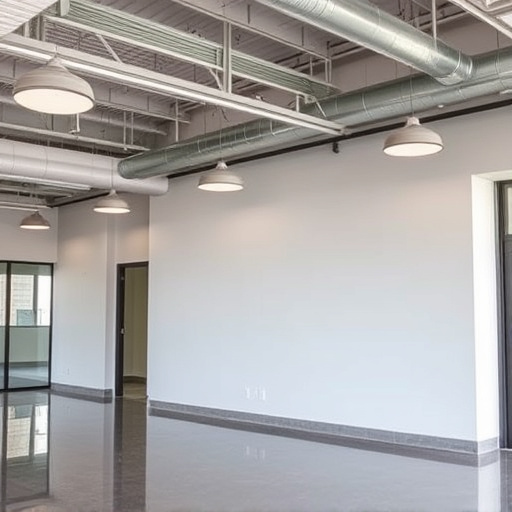Commercial remodeling is a complex process involving transforming existing spaces into functional, aesthetically pleasing, and industry-specific business environments. It begins with assessing the property, defining client goals, and close collaboration on designs. Architects play a pivotal role in space planning, considering factors like accessibility, lighting, acoustics, and productivity to meet occupant and customer needs. Through robust collaboration, clear communication, and proficient project management, architects ensure successful renovations that are innovative, sustainable, and enhance property appeal while adhering to regulatory compliance and cost-effectiveness.
In the dynamic realm of commercial remodeling, architects play a pivotal role in transforming spaces into thriving environments. This complex process demands a unique blend of design vision, functionality, and aesthetic appeal. Understanding the intricacies of commercial remodeling involves recognizing the architect’s expertise as a game-changer. From conceptualization to execution, their leadership ensures success through meticulous collaboration, clear communication, and effective project management—key factors for any venture’s longevity and prosperity.
- Understanding Commercial Remodeling: A Complex Process
- The Architect's Expertise: Design, Functionality, and Aesthetics
- Ensuring Success: Collaboration, Communication, and Project Management
Understanding Commercial Remodeling: A Complex Process

Commercial remodeling is a multifaceted process that involves transforming existing spaces into functional and aesthetically pleasing environments tailored for business operations. Unlike residential renovations, which often focus on personal tastes and comfort, commercial projects demand a deep understanding of industry-specific needs, regulatory compliance, and cost-effectiveness. Every aspect, from layout design to material selection, must align with the client’s goals and target audience.
This complex journey begins with assessing the current state of the property, identifying areas for improvement, and collaborating closely with clients to define their vision. Architects play a pivotal role here by offering expert insights into space planning, ensuring that floor replacements, home transformations, or multiple room remodels not only meet but exceed expectations. They translate abstract ideas into concrete designs, considering factors like accessibility, lighting, and acoustic solutions to create spaces that foster productivity and enhance the overall experience for occupants and customers alike.
The Architect's Expertise: Design, Functionality, and Aesthetics

Architects play a pivotal role in the success of any commercial remodeling project. Their expertise lies in seamlessly blending design, functionality, and aesthetics to create spaces that are both visually appealing and highly functional. In the realm of commercial remodeling, architects work closely with clients to understand their business needs, target audience, and brand identity. They use this information to craft designs that not only meet but exceed expectations, ensuring every aspect of the renovation aligns with the client’s vision.
Beyond creating beautiful spaces, architects bring a wealth of knowledge in various aspects of renovation services, from structural considerations to code compliance. They are well-versed in the latest trends and materials, including those suitable for specific commercial applications like bathroom remodels or residential renovations. This deep understanding allows them to offer innovative solutions that enhance the overall value and appeal of the property while ensuring longevity and sustainability.
Ensuring Success: Collaboration, Communication, and Project Management

Ensuring success in any commercial remodeling project heavily relies on collaboration, communication, and effective project management. Architects play a pivotal role in this regard, serving as the central point for coordinating various stakeholders such as clients, contractors, and designers. They facilitate seamless interactions among team members, ensuring everyone is aligned with the project’s vision, scope, and timeline.
Through meticulous planning and regular updates, architects ensure that the commercial remodeling process stays on track. They manage project timelines, allocate resources efficiently, and address any challenges or changes promptly. Moreover, they integrate their expertise in space planning, material selection, and structural considerations into the mix, ensuring not only a visually appealing but also functional and safe interior painting and customized work environment.
Commercial remodeling is a multifaceted endeavor that demands a strategic approach. Architects play a pivotal role in this process by offering expertise in design, enhancing functionality, and achieving aesthetic excellence. Through effective collaboration, clear communication, and meticulous project management, architects ensure successful outcomes that meet client expectations. By integrating their creative vision with practical considerations, they transform spaces into dynamic and profitable commercial environments.














